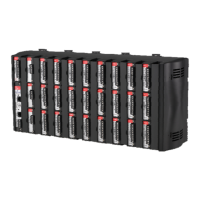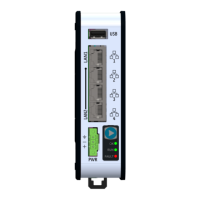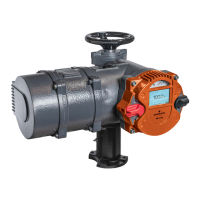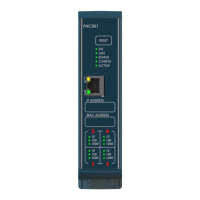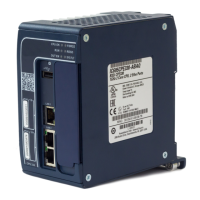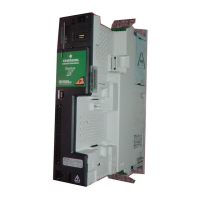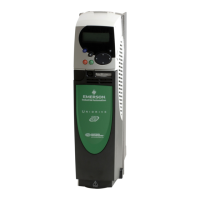ROC800-Series Instruction Manual
5-10 Communications Revised July-2017
LOI – Local Port EIA-232 (RS-232D). Refer to Section 5.5, Local
Operator Interface.
Built-in – Comm2 EIA-232 (RS-232C).
Module – Comm3 to Comm5 EIA-232 (RS-232C).
EIA-232 (RS-232) uses point-to-point asynchronous serial
communication and is commonly used to provide the physical interface
for connecting serial devices, such as gas chromatographs and radios to
the ROC800-Series. EIA-232 (RS-232) communication provides
essential hand-shaking lines required for radio communication, such as
DTR and RTS.
EIA-232 (RS-232) communication includes LED indicators that display
the status of the Receive (RX), Transmit (TX), Data Terminal Ready
(DTR), and Ready To Send (RTS) control lines.
Table 5-6 defines the built-in EIA-232 (RS-232) terminals at the
Comm2 port and their function signals.
Table 5-6. Built-in EIA-232 (RS-232) Signal Routing – Comm2
Lit when Comm2 is currently receiving.
Lit when Comm2 is currently transmitting.
Lit when Comm2 request to send is active.
Lit when Comm2 data terminal ready is active.
The EIA-232 (RS-232) communication module provides EIA-232 (RS-
232C) signals on the Comm3, Comm4, or Comm5 port depending on
where you have installed the module. Refer to Table 5-7.
Table 5-7. EIA-232 (RS-232) Communication Module Signal Routing – Comm3, Comm4, and Comm5
Lit when module (Comm3, Comm4, or Comm5) is
currently receiving.
Lit when module (Comm3, Comm4, or Comm5) is
currently transmitting.
Lit when module (Comm3, Comm4, or Comm5)
request to send is active.
Lit when module (Comm3, Comm4, or Comm5)
data terminal ready is active.
5.8 EIA-422/485 (RS-422/485) Serial Communications Module
EIA-422/485 (RS-422/485) communication modules meet all EIA-
422/485 (RS-422/485) specifications for differential, asynchronous
serial communication transmissions of data over distances of up to 1220
meters (4000 feet). EIA-485 (RS-485) communication is commonly

